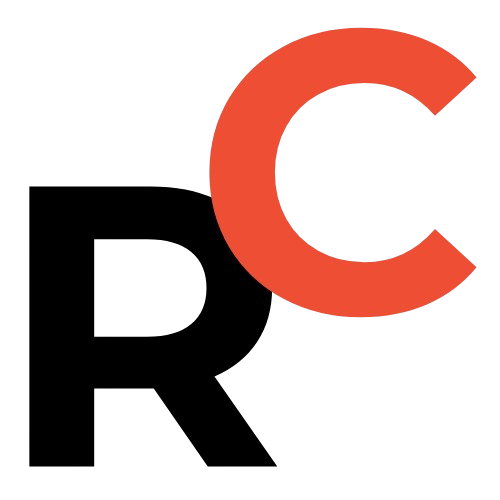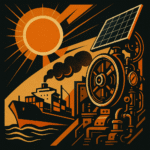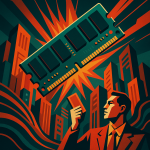Key Points
- Momentum across vendors: Several Chinese listed firms — including Sungrow (Yangguang Dianyuan 阳光电源), KSTAR (Ke Shida 科士达) and China XD Electric (Zhongguo Xidian 中国西电) — are publicly acknowledging SST work, which lowers commercial uncertainty.
- Hyperscaler partnerships likely: Companies signal collaboration with cloud providers and internet firms as the commercialization path; Sungrow aims product validation and small-scale deliveries in 2026.
- Technical hurdles remain: Expect lengthy validation cycles focused on thermal management, high‑voltage power‑electronics design, reliability and interoperability testing.
- Architecture and voltage trend: Winners will offer system-level capabilities that pair SSTs with storage and renewables and support 400–800VDC (notably 800V DC) rack/board delivery for higher efficiency.

solid-state transformers are moving from research labs into investor decks and vendor roadmaps.
Overview — solid-state transformers in data-center power
Solid-state transformers (SSTs) have attracted growing market attention.
Several Chinese listed companies answered investor questions on interactive platforms and during investor calls, outlining their R&D status, technical capabilities and commercial plans related to SSTs and related AIDC (data-center power) solutions.
This article preserves the companies’ responses and adds concise, practical insights for founders, investors, techies and marketers watching the SST and data-center power transition.

Resume Captain
Your AI Career Toolkit:
- AI Resume Optimization
- Custom Cover Letters
- LinkedIn Profile Boost
- Interview Question Prep
- Salary Negotiation Agent

Why investors care: short context
Investor interest in solid-state transformers is driven by several trends in data-center power architecture.
Data centers and large ICT customers are looking for higher-efficiency, lower-loss DC delivery and more flexible power distribution than traditional UPS-centric AC systems offer.
Architectures in play include 400–800VDC and specifically 800V DC options for rack- and board-level delivery, which change how power conversion and distribution are designed.
System-level designs are pairing SSTs with energy storage and renewable generation to deliver integrated green-power stacks.
That said, companies stress that moving from prototypes to commercial SST deployments requires solving thermal management, high-voltage power-electronics design, reliability and interoperability testing.

Company responses — detailed
Sungrow (Yangguang Dianyuan 阳光电源)
Sungrow (Yangguang Dianyuan 阳光电源) said data-center power is evolving from traditional UPS-centric AC distribution toward 800V DC architectures.
The company explained its AIDC (data-center power) strategy rests on three advantages: 1) strength in high-voltage products; 2) existing technical foundations in solid-state transformers; and 3) customer demand to deliver green power directly.
Sungrow noted that NVIDIA (Yingweida 英伟达 / NVIDIA) referenced SST + large-scale storage architectures in a recent white paper, and that Sungrow believes it can provide an integrated green-power architecture—from high-voltage DC to rack- and board-level power delivery—to enable precise power solutions.
The company said it will actively pursue cooperation with leading international cloud providers and major domestic internet firms, start product definition and development, and aims to achieve product validation and small-scale deliveries in 2026.
Investor takeaway: Sungrow positions SSTs inside a broader green-power stack and is signaling partnerships with hyperscalers and internet firms as the commercial pathway.
KSTAR (Ke Shida 科士达)
KSTAR (Ke Shida 科士达) described SSTs as a new power-electronics solution at the application end that offers integrated functions, improved efficiency and flexible adaptation, but also brings much higher technical challenges.
Key issues such as performance trade-offs, stability and compatibility require rigorous verification and testing.
KSTAR stated it is developing multiple AIDC-related products including SSTs, and will keep close communication with customers throughout development to ensure product fit to application scenarios.
Investor takeaway: KSTAR is prioritizing verification and customer feedback loops — a sensible move given the interoperability risk in DC-centric data-center architectures.
China XD Electric (Zhongguo Xidian 中国西电)
China XD Electric (Zhongguo Xidian 中国西电) said its wholly owned subsidiary, XD Power Electronics Co., Ltd., has the capability to develop 800VDC-architecture solid-state transformers.
The company indicated it will actively track market demand and seize commercial opportunities.
Investor takeaway: China XD Electric is signaling manufacturing and product capability specifically for 800V DC SSTs, aligning with the trend toward higher-voltage rack delivery.
Jiangsu Huachen (Jiangsu Huachen 江苏华辰)
Jiangsu Huachen (Jiangsu Huachen 江苏华辰) said it is actively conducting research on solid-state transformers and is systematically evaluating its readiness across equipment, production lines and supply-chain fit.
Investor takeaway: This is a production-readiness posture — useful for investors who track scaling risks and supply-chain alignment.
XiGaoYuan (Xi Gao Yuan 西高院)
XiGaoYuan (Xi Gao Yuan 西高院) stated the company has testing capabilities for solid-state transformers.
Investor takeaway: Testing capability is a core competitive asset for early-stage SST validation and for working with hyperscalers on interoperability testing.
Zhongheng Electric (Zhongheng Dianqi 中恒电气)
Zhongheng Electric (Zhongheng Dianqi 中恒电气) said it is closely monitoring SST and related technology trends and, based on the company’s situation, will advance extension along the industry chain and expansion of its product lines at an appropriate time.
Investor takeaway: A watch-and-wait posture that keeps options open while the market and standards mature.

Find Top Talent on China's Leading Networks
- Post Across China's Job Sites from $299 / role, or
- Hire Our Recruiting Pros from $799 / role
- Qualified Candidate Bundles
- Lower Hiring Costs by 80%+
- Expert Team Since 2014
Your First Job Post

Market implications and practical signals
What this cluster of responses actually signals to investors, founders and operators:
- Momentum exists across vendor types. Product vendors, power-electronics firms and test houses are publicly acknowledging SST work, which lowers the commercial uncertainty investors face.
- Hyperscaler collaboration is the likely commercialization path. Companies point to partnerships with cloud providers and internet firms as the route to product validation and early orders.
- Technical hurdles remain real and tangible. Expect lengthy validation cycles for thermal management, high-voltage control, reliability and interoperability before broad deployments.
- Architecture winners will bundle system-level capabilities. Firms that can pair SSTs with storage, renewables and rack/board power delivery stand to offer more compelling propositions than standalone SST modules.

ExpatInvest China
Grow Your RMB in China:
- Invest Your RMB Locally
- Buy & Sell Online in CN¥
- No Lock-In Periods
- English Service & Data
- Start with Only ¥1,000

What to watch next
For investors and founders tracking SST opportunities, pay attention to these signals:
- Announcements of formal partnerships with major cloud providers or large enterprise ICT customers.
- Public demonstrations of interoperability between SST modules and existing data-center power stacks.
- Evidence of thermal-management solutions scaled to continuous, high-duty data-center loads.
- Regulatory or standards developments around high-voltage DC distribution in data centers.

Key phrases and terms you should know
- SST — Solid-state transformer.
- AIDC — Advanced data-center power architectures, often referencing 400–800VDC designs.
- UPS-centric AC distribution — The traditional model many operators are moving away from.
- Rack- and board-level power delivery — Where higher-efficiency DC architectures provide the biggest operational ROI.

Conclusion
The conversation around solid-state transformers is shifting from feasibility to commercialization planning among Chinese listed vendors.
Companies from Sungrow (Yangguang Dianyuan 阳光电源) to China XD Electric (Zhongguo Xidian 中国西电) are outlining capabilities, timelines and customer strategies, while others focus on testing, supply-chain fit and staged product rollouts.
For investors, founders and operators, the practical takeaway is clear: the SST narrative is real, but adoption will be paced by verification, interoperability and partnerships with hyperscalers and large ICT customers.
solid-state transformers remain a top watch for data-center power architects and investors.




![Mind-Melds & Market Moves: The Brain-Computer Interface (BCI) Boom is Here [FreshFromChina]](https://freshfromchina.com/wp-content/uploads/2025/05/Mind_Melds_Market_Moves_The_BrainComputer_Interface_BCI_Boom_is_Here_TeamedUpChina-150x150.png)

